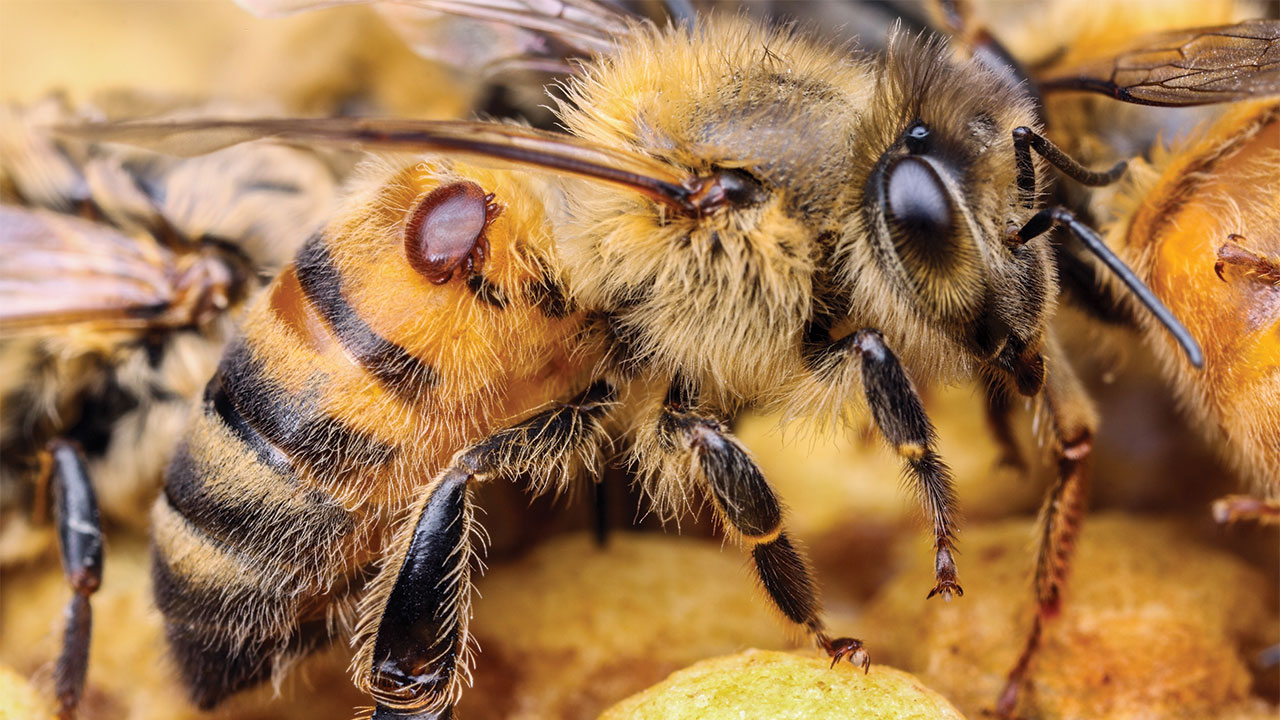



Article by: Hari Yellina
Millions of bees in emergency zones have been put to death since the varroa mite was discovered in sentinel hives at the Port of Newcastle just over a month ago. Authorities in New South Wales are still convinced that the fatal parasite can be eliminated, but beekeepers may soon have a new weapon to aid in the prevention of breakouts in the future. A world-first hormone-based insecticide that is safe for honey bees but deadly to the varroa mite and another damaging pest, the small hive beetle, is being developed by Australian researchers. Although the study effort at the University of Sydney has been ongoing for a year, it may still take two to three years before it is ready for commercialization.
The project’s director Joel Mackay thinks there are signs that, like similar detections at Australian ports over the past ten years, the battle against the present incursions will be successful. Hopefully, the same thing will take place today, and we’ll give ourselves some more time to create technologies like the one we’re working on. The method depends on hormones, namely one crucial hormone that all insects and closely related species have. Ecdysone, a hormone, interacts with a particular protein in the insect called the ecdyson receptor to regulate the majority of these animals’ growth, physiology, and reproductive behaviour, according to Professor Mackay.
The goal of the study is to create compounds that disrupt the communication between the hormone and its receptor. According to Professor Mackay, “this receptor’s shape is just slightly different in other orders of insects, then different again in mites, different again in spiders, and so on.” “The difference between them allows us to expect that we can create compounds that will specifically target a pest’s ecdysone receptor while avoiding the ecdysone receptors of beneficial insects, which is the receptor we have chosen to concentrate on. “Therefore, this is the ideal test situation because both the bee and the varroa mite are virtually imprisoned inside a small box.
We want to put a lot of effort into developing compounds that are specific for the varroa mite’s ecdysone receptor but not the honey bees. According to Professor Mackay, native bees and other animals in the environment wouldn’t be harmed by the chemical either. Fish, birds, mammals, and people don’t use ecdyson, making our system by default far safer for other ecosystem components, according to him. “This ecdysone hormone and the receptor protein, they’re not present in any vertebrates,” he added. He anticipates that the chemical will have a healthy international market. Since there are now no viable treatments for varroa that the varroa are not developing resistance to, I believe that the demand would be almost every beekeeper on the earth.”
Hort Innovation Australia, La Trobe University, and the Walter and Eliza Hall Institute have all contributed to the $1.2 million project. Bee hives in the low-risk blue zone have begun to move around NSW to help pollinate crops, especially almonds. About 200 hive movement declarations, according to NSW Apiarists’ Association president Steve Fuller, have been submitted. Why, he asked, is the entire state at a standstill when “we’re very convinced that we have it surrounded”? “If we weren’t certain of our containment lines, we wouldn’t have put any movements in place,” he continued. Beekeepers who are restricted to the blue zone have also been granted a group permit to travel through NSW on their way to and from Queensland.
“We need to bring Queensland hives down there because the almond business is severely lacking in bees this year since Victorians are unable to cross the border into NSW. The observation and euthanasia of contaminated hives in the red zone have now increased as part of the control effort. “We do expect to detect varroa mite there when surveillance moves back into the red zone, and that won’t be any surprise, that’s exactly what we expect,” he added. “The ones that we are concerned about is that we have to review the issue if we find it in the yellow.”